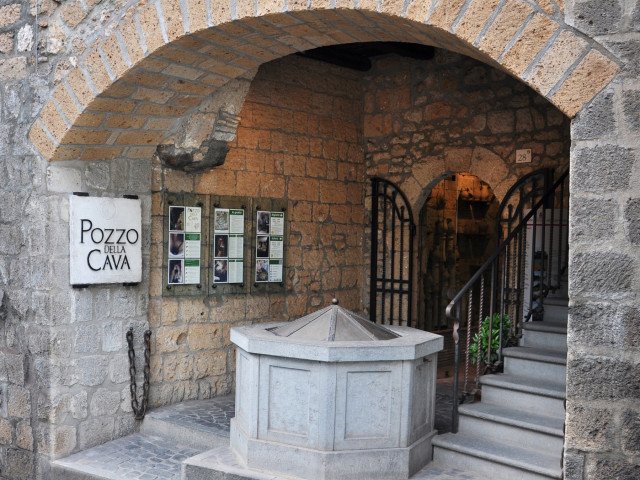The Pozzo della Cava archaeological complex takes its name from the oldest well in Orvieto, excavated at the behest of Pope Clement VII. The hydraulic waterworks expanded an earlier Etruscan well dating back to 6th - 5th Century BC. The impressive underground complex with its nine caverns running beneath the medieval streets of the Cava neighborhood have preserved several fascinating Etruscan, medieval and Renaissance artifacts.
The Well of the Quarry / Pozzo della Cava archaeological complex takes its name from the oldest well in Orvieto, rediscovered by chance in the basement of a house in the medieval quarter, had laid abandoned more than three centuries.
It was excavated at the behest of Pope Clement VII, who took refuge in Orvieto after “the Sack of Rome” by the imperial troops and the Lanzichenecchi, to supply the city with water in the event of a siege. So, between 1528 and 1530, they expanded an earlier Etruscan well dating back to 6th - 5th Century BCE.
Its expansion inspired the architect Antonio da Sangallo the Younger’s work on the famous St. Patrick's Well.
The Pozzo della Cava is 36 meters deep and it consists of two unified sections: the larger, round one has an average diameter of 3.40 meters, the smaller one is a rectangular shaft, measuring 60x80 cm and has the typical Etruscan “pedarole”, footholds cut into the walls to enable access.
The impressive underground complex with its nine caverns running beneath the medieval streets of the Cava neighborhood, have preserved countless Etruscan, medieval and Renaissance artefacts. Among the Etruscan remains, next to the excavations that have been interpreted as ancient burial remains,
It’s possible to see some portions of the tunnels that collected the infiltration water in the tufa rock and a cistern lined with "cocciopesto"; plaster, built to collect and conserve rain water. Now the cistern can be seen in section, because during the Middle Ages it was cutted to dug the staircase of a wine cellar.
Inside the medieval and Renaissance basements, they found also two different furnaces with numerous
remains in terracotta and majolica and their typical "pits" used for rubbish, from which numerous terracotta pipes have emerged; they were used both to collect the rainwater from the roofs and to connect the fountains with the medieval aqueduct.
The game of use and reuse of the same underground environments is completed in the large final cave, which owes its current appearance to the works of the late eighteenth century and the area preserves traces of the transformations carried out over a period of twenty-eight centuries, starting from the bottom of a second Etruscan cistern never completed.
AQVAVETUS project:
The excavation of another six caves a few meters from the Pozzo della Cava archaeological complex has recently been completed and work will soon begin to build the communication trenches and structures necessary to make them usable by the visitors. Their museum layout will include four sections dedicated to the different types of water to which the excavations of the Pozzo della Cava's caves are linked: spring water, rainwater, infiltration water and water from the aqueduct.
Visits and more
The Pozzo della Cava archaeological complex is managed by the company of the owner family, which
organizes self-guided and guided visits, thematic tours and with tastings, educational and recreational
workshops. The structure has also a cafeteria, a small restaurant and a ceramic workshop.




























